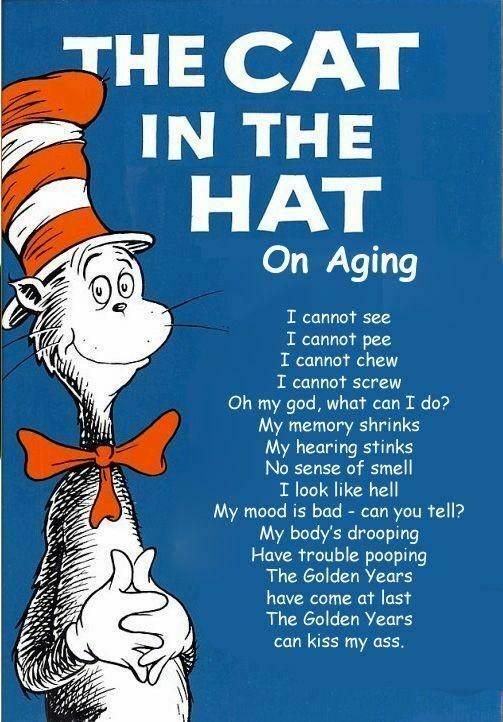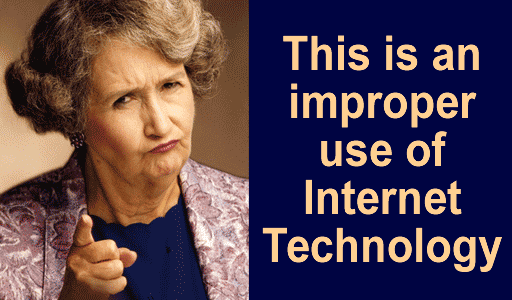-
Posts
14,224 -
Joined
-
Last visited
Content Type
Forums
Donations
News
Events
Gallery
Everything posted by samhexum
-
Taylor Lautner and his wife, Taylor Lautner, will be on THE VIEW today.
-
Geez! You mean the baseball season is still dragging on?
-
Queens Council Member Sandra Ung joined community leaders, elected officials and the Olde Towne of Flushing Burial Ground Conservancy on Saturday, Oct. 28, for the renaming of the intersection of 164th Street and 46th Avenue in Flushing, which is now known as “Olde Towne Burial Ground Lane.” “Olde Towne Burial Ground Lane will forever stand as a testament to our commitment to acknowledging the past and ensuring that the memory of those who rest here is never forgotten,” said Ung. “This is more than just a change in signage, it is a powerful declaration of our city’s values and will hopefully help future generations understand the importance of recognizing and rectifying injustices. We aren’t just renaming a street, we are rewriting a narrative.” The area was bought by the town of Flushing in 1840 and used as a pauper’s burial ground. Approximately 1,000 people, mostly of African American or Native American descent were buried there over the years. The last burial at the site took place in 1898, which was the same year that New York City was consolidated into five boroughs. The site remained as it was for a number of years until it was transferred to the Parks Department in 1914 and eventually a playground was built over it in 1936. Despite news articles at the time quoting people saying there were bones being pulled from the ground, bodies were never removed. The playground remained in use until the 1990s, when the late Mandingo Osceola Tshaka advocated on behalf of the burial ground to be included in the State and National Registers of Historic Places and prompted archaeological studies. The playground was transformed into a memorial space in 2006 and in 2010 the space was officially renamed Olde Towne of Flushing Burial Ground. In 2021, a central memorial was dedicated and it includes the names of 320 people who are known to have been interred there.
-
I told him you said so. He replied, "Bless his heart!"
-

Matthew Perry dies - drowning the given cause
samhexum replied to viewing ownly's topic in The Lounge
-
-

Matthew Perry dies - drowning the given cause
samhexum replied to viewing ownly's topic in The Lounge
Drowned in his hot tub. If no drugs were involved, maybe his heart gave out after abusing himself for so many years. He was a good-looking man in his prime, as was his dad. -
Congratulate me. I am now a parent. I've been getting notices from the city that they'd pay me 'up to $30' to fill out a mental health questionnaire for households with kids < 17. So I now have one kid, between 13 & 17.
-

On this, the first cold weekend of the season, .........
samhexum replied to ICTJOCK's topic in The Lounge
79 degrees. Brrrrrrrrrrrrrr. -
SOME TRUTHS ARE UNIVERSAL: (THAT'S THE PUN, NOT THE COMIC STRIP)
-
SOME TRUTHS ARE UNIVERSAL:
-
Bad grammar causes actual physical distress in others, study reveals DUH! Your going to want to read this. New research finds that when people are subjected to poor grammar, it actually causes them stress — and even initiates a “fight or flight” response. A lack of proper speech or penmanship sets off several triggers within the automatic nervous system (ANS) — a network that controls the body’s unconscious processes — according to the University of Birmingham. Heart rate variability — or HRV, which measures the time in between beats — was used as the primary metric to determine how linguistic liabilities impact a person’s physical being. When relaxed, HRV is commonly less regimented — and it only becomes regular during times of stress, researchers noted. The more grammatical errors a person heard coincided with the strict regularity of their heartbeat, an indication of stress. Hearing or reading those cringeworthy errors triggers two (not to or too) pieces of the ANS that are known as the sympathetic and parasympathetic nervous systems. “Simply put, the sympathetic nervous system activates the ‘fight or flight’ response during a threat or perceived danger, while the parasympathetic nervous system controls the ‘rest and digest’ or ‘feed and breed’ functions of the body,” principal study investigator Dagmar Divjak said. “Our findings show that [the ANS], too, responds to cognitive demands, and this suggests that cognitive effort reverberates through the physiological system in more ways than previously thought.” Just over a decade ago, researchers at the University of Illinois commonly connected grammar sticklers to having a form of OCD called Grammatical Pedantry Syndrome. The brain activity of the verbal buffs showed similarities to obsessive-compulsive behavior. “The results of this study bring into focus a new dimension of the intricate relationship between physiology and cognition,” Divjak said. “The relation between language cognition and the autonomic nervous system has so far received less attention.” Now, the latest report looks to further pursue evidence that words matter — and may actually hurt us. “This study provides us with a new method for tapping into aspects of cognition that are not directly observable,” the professor added. “This is particularly valuable in work with language users who are unable to verbally express their opinion due to young or old age, or ill health.”
-
Woman claims she accidentally performed sex act on own dad while at bachelorette party in Amsterdam I guess she's so used to guys saying "Who's your daddy?" that she didn't give it a second thought when dear old dad said it. This is why you're fat — study finds possible major root cause of obesity because I eat way too much crap?
-
You keep candy by the toilet?
-
And can probably take a joke.
-
-
NASA wants to fly this nuclear Dragonfly drone on Saturn's moon Titan. https://www.space.com/nasa-dragonfly-drone-titan-wind-tunnel-test-video Testing is now underway on NASA's Dragonfly rotorcraft, a nuclear-powered, car-sized aerial drone that will look for potential precursors to life on Saturn's moon, Titan. But before Dragonfly can take to the sky, NASA has to make sure it can withstand the moon's unique environment. Dragonfly's main goal is to study the complex chemistry on Titan that may give insights into the origins of life in our solar system. Equipped with cameras, sensors, and samplers, this vehicle will investigate areas of Titan known to contain organic materials, especially those regions where such materials might have encountered liquid water beneath the moon's icy surface in the past. The lander will traverse Titan's nitrogen-rich atmosphere using four dual-coaxial rotors, but to ensure that these rotors can perform under such conditions, the Dragonfly team has conducted numerous tests at NASA's Langley Research Center in Hampton, Virginia, including operating the drone's rotors in an wind tunnel that can simulate the atmospheric conditions on Saturn's largest moon. "All of these tests feed into our Dragonfly Titan simulations and performance predictions," Ken Hibbard, Dragonfly mission systems engineer at Johns Hopkins Applied Physics Laboratory (APL), said in a NASA statement. Four Dragonfly test campaigns have conducted: Two in a 14-by-22 foot subsonic tunnel, and another two at a 16-foot Transonic Dynamics Tunnel (TDT). The subsonic tunnel is used to validate fluid dynamic models developed by mission scientists, while the variable-density heavy gas capability of the TDT is used to validate computer models in simulated atmospheric conditions Dragonfly will likely encounter on Titan. The most recent testing, held in June, involved a half-scale Dragonfly model with hundreds of test runs, said Bernadine Juliano, APL's test lead for the project. "We tested conditions across the expected flight envelope at a variety of wind speeds, rotor speeds, and flight angles to assess the aerodynamic performance of the vehicle," Juliano said. "We completed more than 700 total runs, encompassing over 4,000 individual data points. All test objectives were successfully accomplished and the data will help increase confidence in our simulation models on Earth before extrapolating to Titan conditions." Analyzing this wealth of data involves a collaborative effort, with specialists from institutions ranging from the University of Central Florida to NASA Ames Research Center in Silicon Valley. Rick Heisler from APL, who oversaw the TDT test campaigns, emphasized the value of these tests in understanding Dragonfly's rotor performance in Titan's unique atmosphere. "The heavy gas environment in the TDT has a density three-and-a-half times higher than air while operating at sea level ambient pressure and temperature," Heisler said. "This allows the rotors to operate at near-Titan conditions and better replicate the lift and dynamic loading the actual lander will experience." As the pieces of the mission come together, the enormity of the task and the historic nature of the mission is coming into focus for the team. "With Dragonfly, we're turning science fiction into exploration fact," Hibbard said. "The mission is coming together piece by piece, and we're excited for every next step toward sending this revolutionary rotorcraft across the skies and surface of Titan."
-
A pair of famed international actors who are known from their work on the stage and on screen recently participated in a Q&A event about their upcoming play at Queens Theatre. Lupita Ferrer, a Venezuelan theater actress who has starred in movies such as “Mariana de la Noche,” “The Children of Sanchez” and “Rosa Diamante,” joined Lili Rentería, who known for her role in García Lorca’s “Mariana Pineda” and appeared in Venezuelan television series in the 1990s, participated in a Q&A session to discuss their starring roles in Queens Theatre’s production of “Casa de Muñecas 2,” which is a Spanish translation of Lucas Hnath’s Tony-nominated show, “A Doll’s House Part 2,” which received eight Tony nominations during its 2017 run on Broadway. The Oct. 19 event at Queens Theatre also featured the show’s producer and director, Juan Montero. In this sequel play, main character Nora returns home brimming with newfound confidence as a successful writer, but her husband hasn’t divorced her despite the events of the original play “A Doll’s House,” a classic from Henrik Ibsen that dates back to 1879. The sequel takes place 15 years after Nora slammed the door on her husband, feeling empowered but facing new struggles along the way. “While traveling the world and searching for plays with current, relevant content, we found this adaptation for ‘Casa de Muñecas, 2’ and I knew right then that we had to bring it to North America,” said Juan Montero, producer and director of “Casa de Muñecas 2.” “I found such vital, contemporary elements in it, such as women’s development in today’s society,” Montero added. “This story takes place in the 1890s, yet today in 2023, women are at a disadvantage despite how far we have come.” Ferrer, who has performed in countless Spanish speaking telenovela shows and has been acting since the age of 15, said she was drawn to “Casa de Muñecas 2” after reading the script. “I realized that this was a wonderful work filled with all the elements that a play should have: drama, confrontation, comedy and above all – a homage that applauds womanhood,” said Ferrer, who stars as Ann Marie in the production. Queens Theatre Executive Director Taryn Sacramone called Ferrer a “legendary actress.” “The opportunity to see her live onstage is one that her fans won’t want to miss,” Sacramone said before praising the rest of the cast, including Rentería. “The entire cast is outstanding – Lilli Rentería, who plays Nora, grew up in a theater family – I loved seeing her explore our space for the first time. She stepped onstage and started right into a monologue! Their energy is extraordinary and I’m looking forward to seeing them perform for our audiences.” The play will be performed in Spanish with open captioning in English, with showtimes scheduled from Nov. 10-12 at Queens Theatre, located at 14 United Nations Ave. S. in Flushing Meadows Corona Park. Tickets are available at the Queens Theatre website and range in cost from $32-$42.
-
Nothing... he listed some of the great happenings in his life... I just added the coolest one.
-
It's been awhile since we've had a good GG quote... Angelo: I met a beautiful young Sicilian aerobics instructor. Gorgeous eyes, angelic mouth, and a behind dat must have been made on a Saturday because even the good Lord himself would wanna take a day off to admire it! I lost my heart, and I opened my wallet, eh. All the expensive gifts and fancy dinners and weekends in Mykonos, eh. I even wore one of those-a tiny Speedo swimsuits, shows all your gingerbread and everything, eh. And she leaves me. What does a six-foot-seven-inch American basketball player got that I don't? Blanche: Well Angelo, speaking in terms of the gingerbread alone--- Dorothy: BLANCHE!!!
Contact Info:
The Company of Men
C/O RadioRob Enterprises
3296 N Federal Hwy #11104
Ft. Lauderdale, FL 33306
Email: [email protected]
Help Support Our Site
Our site operates with the support of our members. Make a one-time donation using the buttons below.





















